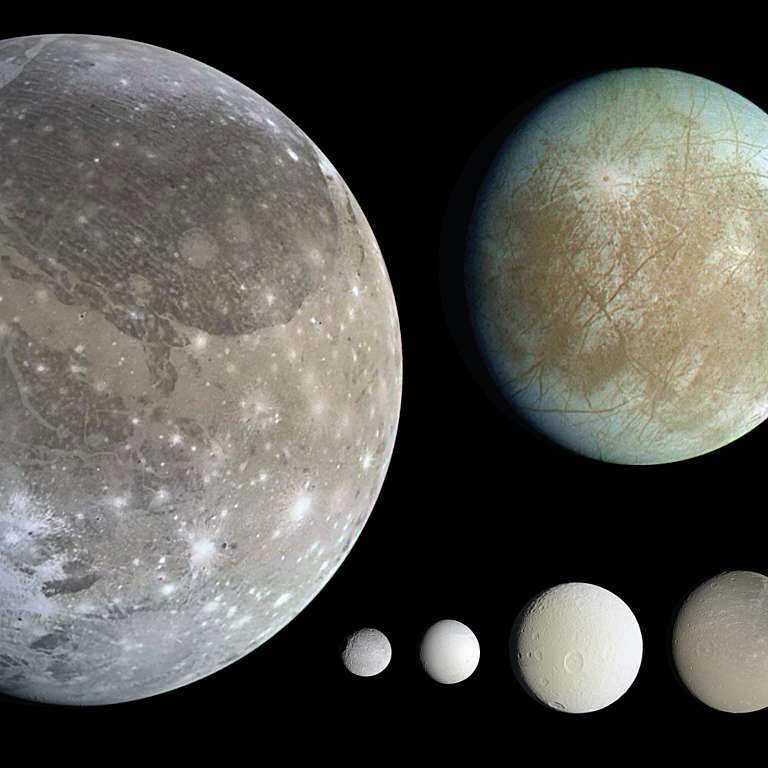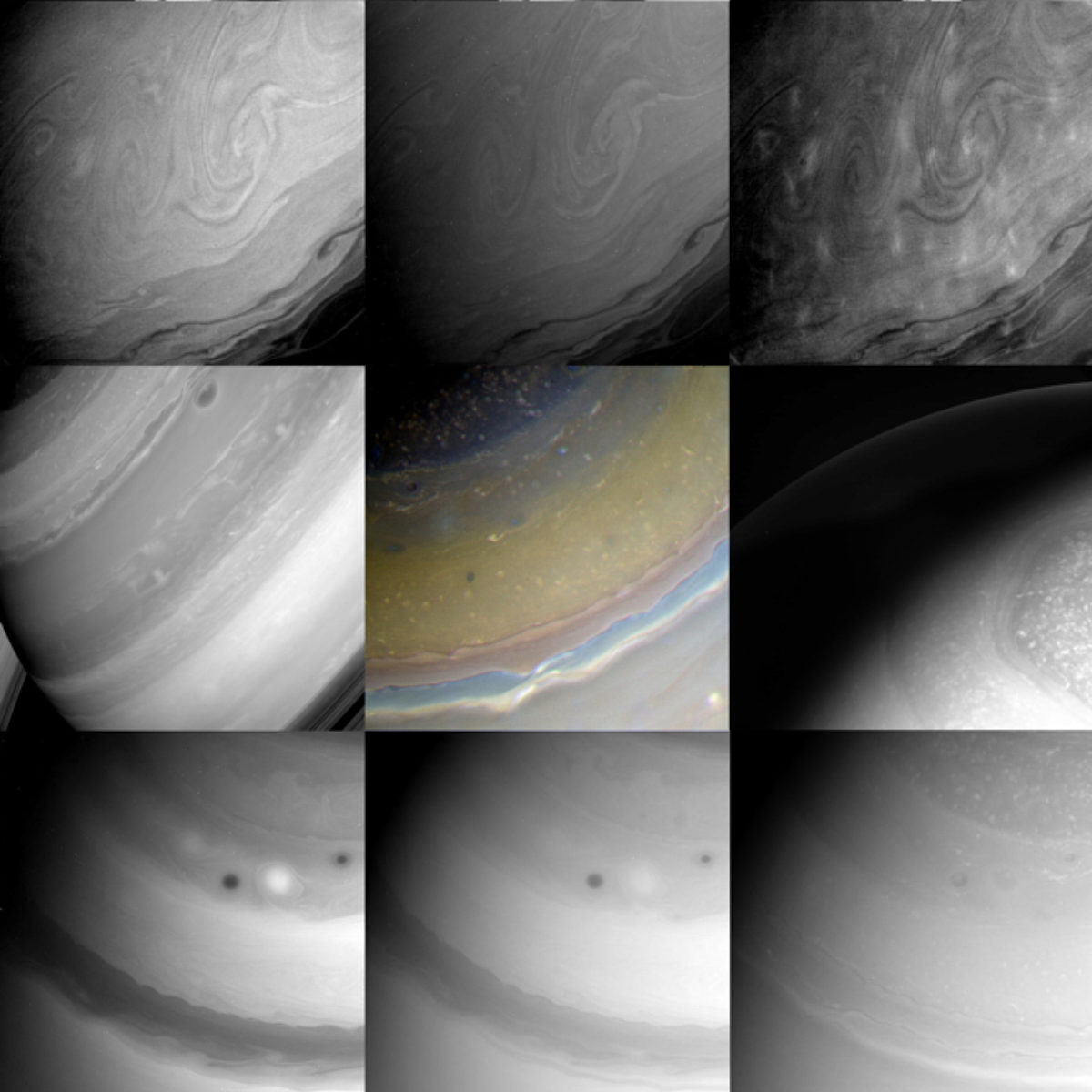All
All
Stories, updates, insights, and original analysis from The Planetary Society.
One of my favorite image processing tricks: colorizing images
An easy image processing trick -- using lower-resolution color data to colorize a black-and-white photo -- is relied upon by many space missions to keep data volumes low. Here's how to do it.
In a New Light
Cassini's unique views of Jupiter and Saturn.
One Day in the Solar System
Dispatches from five different worlds--all sent by robotic spacecraft on the same day.
Planetary Society Weekly Hangout: Reports from the Lunar and Planetary Science Conference
On Thursday at noon PDT / 1900 UTC I'll report on some of my favorite findings from LPSC, and answer your questions about the latest planetary science.
LPSC 2013: License to Chill (or, the solar system's icy moons)
Reports from the March 19 session at the Lunar and Planetary Science Conference covering eight icy moons in the outer solar system: Ganymede, Europa, Dione, Rhea, Mimas, Tethys, Enceladus, and Miranda.
Meteor showers on Titan: an example of why Twitter is awesome for scientists and the public
I use a variety of social networking tools to perform my job, but there's one that's more important and valuable to me than all the rest combined: Twitter. Yesterday afternoon there was a discussion on Twitter that exemplifies its value and fun: are there visible meteors on Titan?
The Stormscapes of Saturn
Look past the rings, and Saturn is even stranger--and more breathtaking.
Arc of Ice and Light
When the sunlight catches it just right, Saturn's F Ring is something to see.
Saturn's Hexagon Viewed from the Ground
For the first time, amateur astronomers are capturing spectacular images of Saturn's bizarre north polar hexagon.
Enceladus: A problem of contrast
Time for my quarterly foray into the Cassini archival science data! The very first image I downloaded from the January 1, 2013 data release presented an interesting challenge to my image processing skill. I'll show you the pretty picture of Enceladus and then explain how I processed it.
Planetary Society Weekly Hangout, Thu Dec 20 1200PT/2000UT: Making Titan in the laboratory with Sarah Hörst
Join us for our weekly Google+ Hangout Thursday at noon PT / 2000 UT. This week, I'm excited to have as a guest Sarah Hörst. Sarah is a postdoc at the University of Colorado whose current line of research involves experimental work on the complex atmospheric chemistry of Titan. She is also applying to be an astronaut!
That amazing image of Saturn's north pole just got better: now, it moves!
Remember the amazing photo of Saturn's north pole that I posted yesterday? Now, thanks to an amateur image processor, it moves, and the motions of the individual clouds within the belts are mesmerizing.
Staring into Saturn's baleful eye
Amazing photos have just come back from Cassini, of swirling clouds surrounding Saturn's north pole.
Watching the slow shift of seasons on Titan
A sharp-eyed amateur noticed two images of Titan taken 20 months apart from nearly exactly the same perspective, and they illustrate how the shifting of Saturn's seasons has brought change to Titan's atmosphere.
A huge color global view of Dione
From the Cassini data archives comes a huge (5000 pixels square!) color image of Saturn's icy moon Dione, worth investigating from both near and far.
DPS 2012, Day 5: How to make asteroids crunchy on the outside and soft in the middle
A summary of just one talk from the Division for Planetary Sciences meeting, by Lindy Elkins-Tanton, which provided a neat explanation for how asteroids can be melted and layered on the inside yet have a primitive-looking exterior.
DPS 2012, Tuesday: Titan's surface
Tuesday morning at the Division of Planetary Sciences meeting featured talks on the surface composition and landforms on Titan, including lakes and
DPS 2012, Monday: Icy moons and a four-star exoplanet
In the first full day of the annual meeting of the Division of Planetary Sciences of the American Astronomical Society, I listened to scientific sessions on icy worlds and on an exoplanet in a four-star system.
Happy Cassini PDS Release Day!
It's a quarterly feast day for me: the day that the Cassini mission delivers three months' worth of data to NASA's Planetary Data System. Here's a few images processed from the October 1, 2012 data release.
Sturzstroms on Saturn's Moon Iapetus
Long-runout landslides (sturzstroms) are found across the Solar System. They have been observed primarily on Earth and Mars, but also on Venus, and Jupiter’s moons Io and Callisto. I have just published a paper about sturzstroms on Iapetus.


 Explore Worlds
Explore Worlds Find Life
Find Life Defend Earth
Defend Earth


 Sun
Sun Mercury
Mercury Venus
Venus Earth
Earth Mars
Mars Jupiter
Jupiter Saturn
Saturn Uranus
Uranus Neptune
Neptune Small Bodies
Small Bodies
















